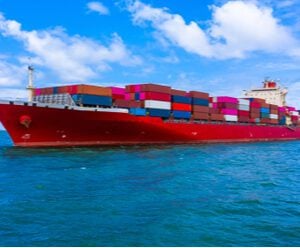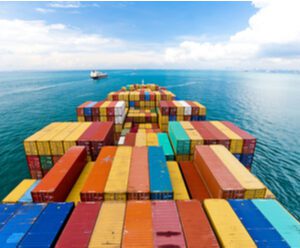港口擁堵奠定了2022年變化無常的基調

港口擁堵仍在繼續,而且緩解瓶頸的努力收效甚微,給2022年海洋貨運的前景蒙上了一層陰影。
雖然即將來臨的春節有助於在一定程度上緩解積壓狀況,但本年度餘下時間內供應情況很可能仍然變化無常,只有到2023年情況才會有所改善。
“我們預計2022年是一個變化無常的一年,雖然情況會有所改善,但我預計市場行情仍然與2021年幾乎相同,甚至可能更具挑戰性,”DHL全球貨運亞太區首席執行官Kelvin Leung說道。
今年年初,預計2022年貿易和經濟增長前景將看好。然而,港口擁堵現象仍然存在,給班輪業務的穩定性造成了很大影響。
《DHL海運市場展望》(2022-2024年)報告提到,承運商的船期可靠性目前處於歷史最低水平,即使是表現最好的承運商也很難達到45%“準時”的水平,表現最差的承運商已經跌破20%大關。
揮之不去的新冠肺炎疫情陰影
新冠肺炎疫情本身仍是主要的不利因素。由於高度傳染性奧密克戎毒株的傳播,新的旅行限制給包括香港在內的主要空運樞紐造成了影響,導致很多航班被取消。
對集裝箱運輸利益相關方損害更大的是去年12月產生於中國工業中心寧波的一連串新冠肺炎病例。 2021年下半年,依照中國嚴格的零疫情政策,寧波已經進行了一連串的部分封鎖。
根據各項報導,最近一次疫情爆發,由德爾塔毒株引起,發生在北崙區一家服裝公司。北崙區是一個重要的製造業中心,也是多個集裝箱碼頭的所在地。
寧波的最近封鎖危及了該地區在春節工廠關閉前盡量保持製造業產量的能力,而且影響了卡車運輸服務的效率和寧波舟山港的運營。寧波舟山港按吞吐量計算是全世界第三大集裝箱樞紐。
在中國其他地方,長江是內地工業集中區與沿海港口之間的主要運輸通道。今年年初,長江航運陷入一片混亂,因為2021年下半年有兩名領航員核酸檢測為陽性,導致大約200名船舶領航員被隔離14天。
由於很大一部分運力被困在港口,因此今年年初,集裝箱貨運市場再次收緊。上海出口集裝箱運價指數(SCFI)是中國之外集裝箱運價市場的晴雨表,當時有史以來首次突破5,000點大關。與2020年12月31日的2,783點相比是一個巨大增長。
轉移問題
除此之外,其他因素也給快速恢復帶來了挑戰。供應鏈還受到東南亞暴雨的衝擊,其中馬來西亞的山洪爆發造成的延誤讓巴生港蒙受數百萬美元的損失。
在某些情形下,緩解瓶頸的工作增加了不確定性。某些承運商選擇跳港,但給通過這些港口運輸的客戶造成了嚴重後果。多次跳港的情況也使得難以衡量班輪服務的可靠性。
長灘港和洛杉磯港都已採取措施緩解港口擁堵,其中包括對逗留超過規定時間的集裝箱收取額外費用。然而,這樣做只是將船隻轉移到港口外的錨地,或者導致船隻減速航行或者轉道備選港口。
預計從2023開始恢復新常態
然而,保持一定程度的謹慎樂觀是有原因的。承運商一直嘗試通過增加航班來填補空缺。另一方面,不少企業學會了盡可能地對訂單進行規劃以保障運力。
今年春節期間通常的製造業減速有希望緩解這個狀況。 “我們希望需求減少可以緩解某些港口的擁堵狀況,而且讓承運商的船期可靠性達到較為正常的水平,”Leung說道。
然而,在2022年大部分時間裡,港口瓶頸很可能在海運供應鏈的效率和可靠性方面起到舉足輕重的作用。根據傑富瑞集團分析師Randy Giveans的計算,去年11月,平均有36.2%的集裝箱船運力擁堵在港口。
DHL全球貨運海運部全球主管Dominique von Orelli稱,至少在今年上半年內,供需狀況仍然與去年相似。 “我們預計2022年上半年供應狀況的易變性仍將基本沿著2021年相似的軌跡發展,”von Orelli說道。
傑富瑞集團Giveans還認為緩解瓶頸所做的努力可能會在今年晚些時候取得成果。 “2022年內,隨著擁堵問題的緩解,運價很可能會從峰值水平回落,”他說道。
然而,《DHL海運市場展望》(2022-2024年)報告稱,只有等積壓需求得到滿足――部分通過投入新運力,全球GDP增長才會進入較為正常的模式。報告提到,集裝箱船訂單數量達到了過去十年內的最高水平,其中大多數集裝箱船在中國建造。如果集裝箱產量保持穩定,那麼隨著最近訂單開始交付,2023年供應增長速度將超過需求增長速度。
2023年和2024年,隨著設備可用性的提高以及全球港口擁堵狀況的緩解,運價將逐漸穩定。然而,需要注意的是運價將遠高於疫情爆發前的水平。
與此同時,客戶應當與運輸合作夥伴密切合作,保護自身在危機最嚴重的時期不受影響。 “為了在短期和中期內保障海運供應鏈,建議客戶根據準確的庫存和訂單預測提前進行規劃,並且考慮與承運商簽訂長期協議,”von Orelli說道。









 繁體中文(香港)
繁體中文(香港)